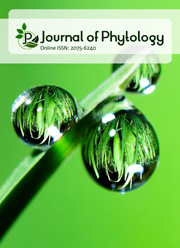Differential expression profiles of anthocyanidin biosynthesis gene during black rice seed development
DOI:
https://doi.org/10.25081/jp.2021.v13.6919Keywords:
Anthocyanidin, anthocyanidin synthase, chalcone synthase, dihydroflavonol 4-reductase, flavonoid 3’-hydroxylase, flavonoid 3’,5’-hydroxylase GluA-3Abstract
The black rice (Oryza sativa cv. Heugjinju) is rich in anthocyanins which is beneficial to human health. To correlate the biosynthesis of the pigments with relevant genes, the mRNA level of genes involved in anthocyanin biosynthesis was monitored by quantitative real-time polymerase chain reaction (qRT-PCR) during seed development of black rice. The mRNA level of F3’H, DFR, and ANS, key enzymes in anthocyanidin biosynthesis, peaked at 10 days after flowering. In general, the absolute level of ANS was approximately one order higher than F3’H, F3’5’H, and DFR in 10 days after flowering. The transcript level of major seed protein gene GluA-3, taken as reference, was also at the highest on the 10 days after flowering. However, the level of CHS isogenes was highest at 15 or 20 days after flowering. The highest transcript level of the genes, except CHS, preceded the highest anthocyanidin content by 5 days. This pattern coincided with an increase of anthocyanin content between 10 and 15 days after flowering. From these findings, it is suggested that particular CHS isoforms might be responsible for the anthocyanin production in black rice.
Downloads
Published
How to Cite
Issue
Section
Copyright (c) 2021 Yeon Bok Kim, Ramaraj Sathasivam, Soo-Un Kim, Sang Un Park

This work is licensed under a Creative Commons Attribution 4.0 International License.





 .
.